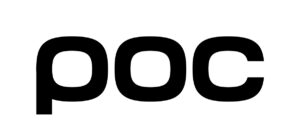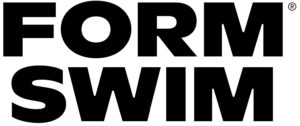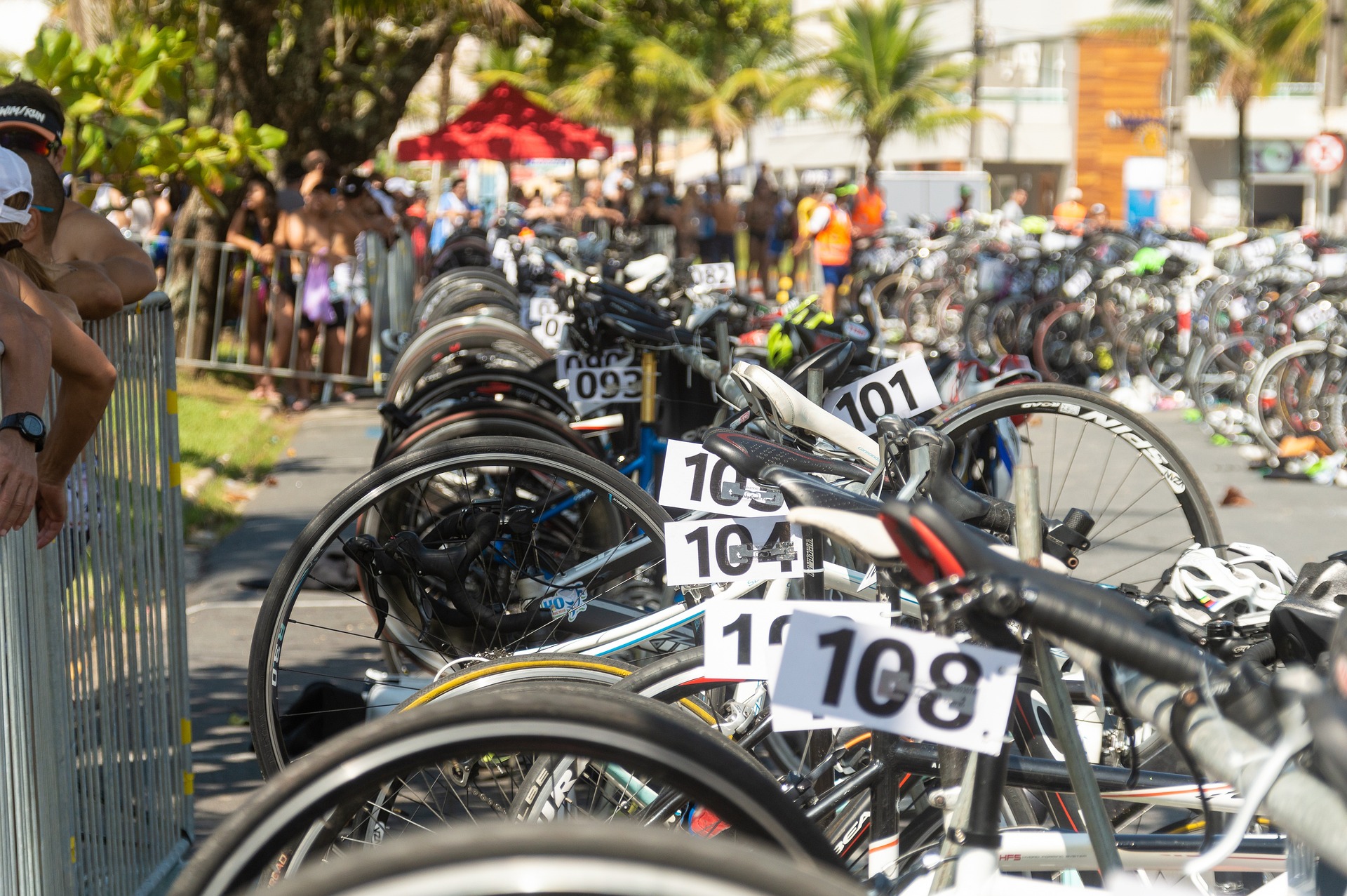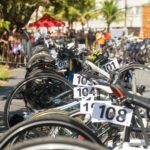You’re probably thinking, “Say what?,” Anyone who has ever done a triathlon knows there are only two transitions in a race, the well-named T1 (swim to bike) and T2 (bike to run). But clinging to that outdated belief may hold you back from being the best triathlete you can be. By embracing the fact that there are actually four transitions—yes, I said four!—in a triathlon, what I call T0 and T3, you will be better prepared for and get the most out of your race itself. Plus, these same newly discovered transitions are of equal value when applied to your training.
actually four transitions—yes, I said four!—in a triathlon, what I call T0 and T3, you will be better prepared for and get the most out of your race itself. Plus, these same newly discovered transitions are of equal value when applied to your training.
Now, let me introduce you to the other two transitions that you didn’t even realize existed until a few moments ago.
T0 (zero)
 T0 begins your race day when you wake up and transition into race mode. T0 is the period of time when you prepare yourself for your race. This preparation starts with what I call “taking a moment” in which, before you get out of bed, you focus on the day. During this initial phase of the T0, you reflect on your goals and imagine successful execution of key parts of the race.
T0 begins your race day when you wake up and transition into race mode. T0 is the period of time when you prepare yourself for your race. This preparation starts with what I call “taking a moment” in which, before you get out of bed, you focus on the day. During this initial phase of the T0, you reflect on your goals and imagine successful execution of key parts of the race.
From this entry point into T0, you will do the following as you transition to the start of your triathlon (you may not do all of these or in this order, as what you include in T0 is personal to your needs):
- Early fueling
- Early physical warm-up
- Gear check
- Check-in

- T1 set-up
- Race warm-up
- Final nutrition
- Mental prep (e.g., review race strategy, focus on race goals, more imagery of key parts of the race, positive self-talk, intensity control
- Put on wetsuit and do final physical and mental warm-up
T3
 You most likely think that your race is finished when you cross the finish line, but not quite. That’s when you enter T3, the time when you transition from race mode back to normal life. T3 involves a physical cool-down in which you allow your body to slowly return to equilibrium after the effort and intensity of the race. It is also when you refuel your depleted body with solid foods and liquids. You may also go for an easy jog or lay down and stretch.
You most likely think that your race is finished when you cross the finish line, but not quite. That’s when you enter T3, the time when you transition from race mode back to normal life. T3 involves a physical cool-down in which you allow your body to slowly return to equilibrium after the effort and intensity of the race. It is also when you refuel your depleted body with solid foods and liquids. You may also go for an easy jog or lay down and stretch.
T3 also has a practical aspect to it, involving changing out of your race kit, breaking down your tran sition area, and packing up your gear. This part of T3 is more important than you may realize because it provides a literal manifestation of putting the race behind you and returning to your regular life.
sition area, and packing up your gear. This part of T3 is more important than you may realize because it provides a literal manifestation of putting the race behind you and returning to your regular life.
The mental part of T3 is equally important. Depending on the importance of the race, you may have been thinking about, planning, and training for the event for months, and then given it everything you had in the race. I encourage you to reflect on your execution, effort, and outcome of the race. Try the following as you exit T3:
- Ask yourself how you felt about your race, if you achieved your goals, and how satisfied you are with your performance.
- Connect with any emotions you may feel about the race, whether positive (e.g., pride, inspiration, satisfaction) or negative (e.g., frustration, disappointment).
- Identify what you did well and what you need to improve.
- Make note of any lessons learned that will help you in your next race.

- Regardless of whether the result was satisfying or disappointing, take a moment and appreciate your day, reflect on how fortunate you are to be healthy enough to do triathlons, be grateful for the opportunity, and be thankful to people in your life who make it possible.
- Direct your gaze to your next race when you will once again begin the cycle of transitions in triathlon that you now know are four, not two.
T0 and T3 in Training
Triathletes also don’t think about transitions in training, except perhaps if you are doing a brick. Yet, just as T0 and T3 can help you with your race day, they can similarly enable you to get the most out of your  training efforts. Your goal should be quality training which I define as: 1) being totally physically and mentally prepared for your workout; 2) giving your best efforts in achieving your workout goals; and 3) gaining the most benefit from the workout.
training efforts. Your goal should be quality training which I define as: 1) being totally physically and mentally prepared for your workout; 2) giving your best efforts in achieving your workout goals; and 3) gaining the most benefit from the workout.
Having a brief T0 routine that smooths your transition from life mode to training mode can facilitate your experiencing quality training. Your T0 routine can encompass nutrition (fueling up), gear (getting everything you need organized and in place), physical (warming up), and mental (getting motivated and focused).
Your T3 training routine can enable you to reflect and get closure on your just-completed workout. You can record relevant impressions, information, or data about your workout in your training platform. Refueling is another key part of T3 to ensure that you replenish the stores you depleted during your workout. Finally, an essential part of T3 is to acknowledge the small victories you achieved in the workout including: 1) just showing up, when it may have been easier skip it; 2) doing more than just showing up, meaning giving your best effort; 3) hitting your workout target numbers (and if you didn’t, understanding why not so you can hit them next workout); and 4) recognizing another deposit you made in your “confidence bank,” the growing size of your confidence bank account, and your excitement at being able to make a big withdrawal on race day.
Refueling is another key part of T3 to ensure that you replenish the stores you depleted during your workout. Finally, an essential part of T3 is to acknowledge the small victories you achieved in the workout including: 1) just showing up, when it may have been easier skip it; 2) doing more than just showing up, meaning giving your best effort; 3) hitting your workout target numbers (and if you didn’t, understanding why not so you can hit them next workout); and 4) recognizing another deposit you made in your “confidence bank,” the growing size of your confidence bank account, and your excitement at being able to make a big withdrawal on race day.







